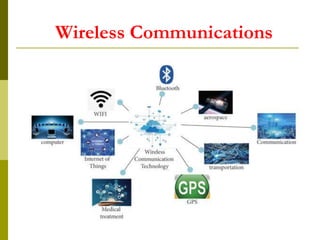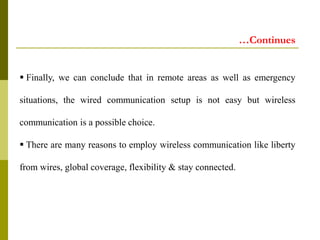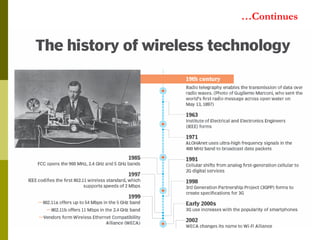This document provides an overview of wireless communication technologies. It defines wireless communication as the transmission of information between two or more points without a physical connection. The document then discusses the history and development of wireless communication from early radio to modern cellular networks. It also covers the basic elements of a wireless communication system including transmitters, channels, and receivers. Finally, it describes different types of wireless technologies such as Bluetooth, Wi-Fi, and cellular networks as well as short-range wireless communication systems.






















































